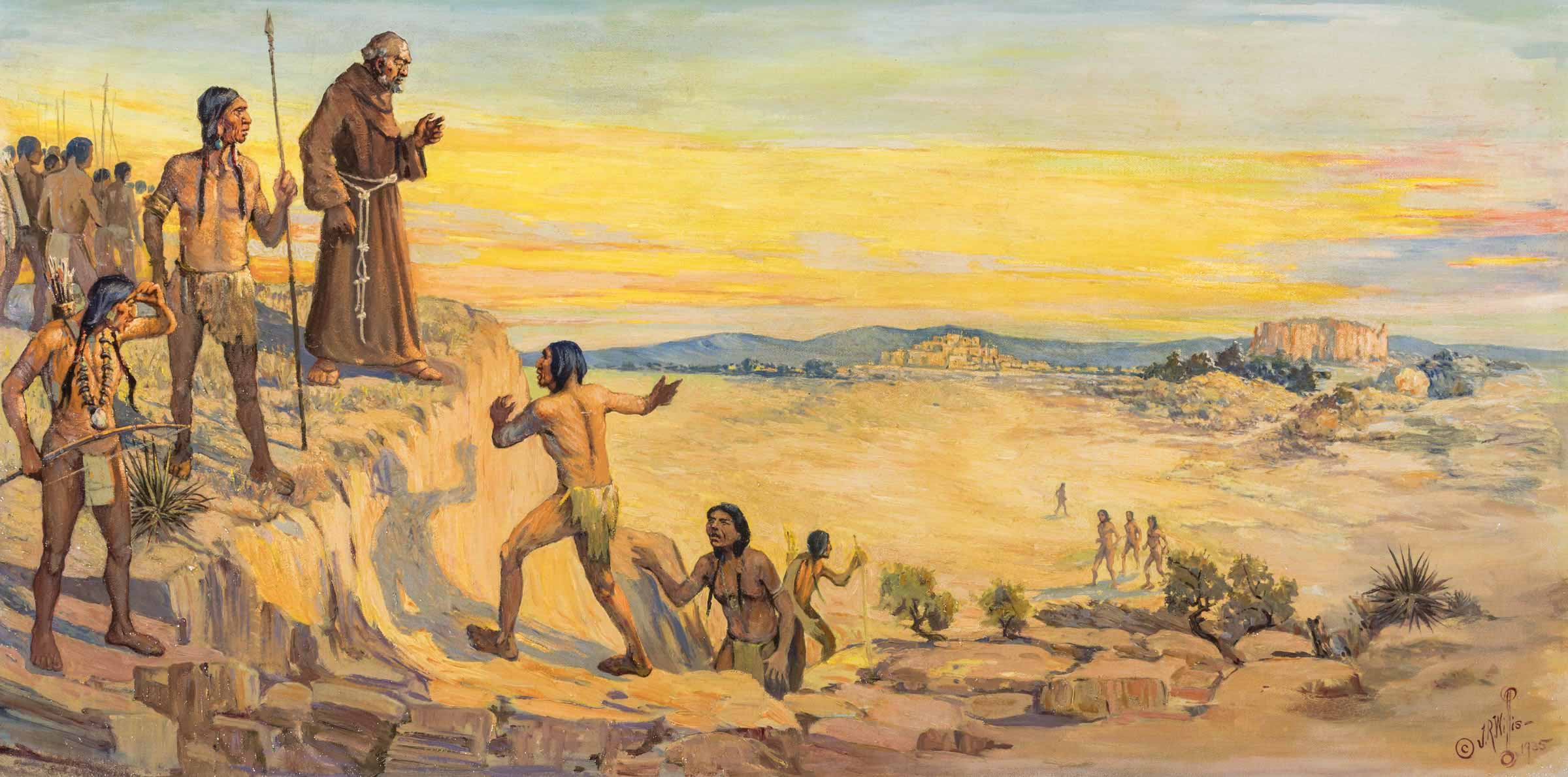This is the third in a seven-part series of Southwestern history murals that the Gallup public schools commissioned J. R. Willis to paint through the Public Works of Art Project between 1935 and 1936—and that still hang in the Gallup High School library.
Here, Willis fictionalizes the story of Fray (Friar) Marcos de Niza’s sighting of the Pueblo of Zuni (an event fictionalized in much the same way by Niza himself). Sent to find the rumored “Seven Golden Cities of Cibola” in what is now northwest New Mexico in the late 1530s, Niza declined to do more than glance at the Pueblo of Zuni from a distance after he was told that his advance scout (Estebanico, an enslaved Black Moroccan who had previously been part of the Cabeza de Vaca expedition) had been killed by its residents. His report of a large city full of riches, however, spurred Francisco Vásquez de Coronado’s expedition in 1540.
The image of Niza being welcomed with open arms into the Pueblo is a fabrication, a Eurocentric historical rewrite that denies issues of conflict and conquest. Likewise, Willis portrays A:Shiwi (Zuni) people in a primitivist and entirely inaccurate way, wearing loincloths and carrying spears and bows and arrows. This depiction serves the dominant narrative of the supremacy and inevitability of European “civilization” used to obscure and justify the violent policies and practices of colonization.







